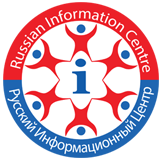Location : Anichkov Palace
Saint Petersburg.
The palace got its name from Anichkov Bridge. This is the oldest surviving building on Nevsky Prospect.
The palace began to be built in 1741 by decree of Empress Elizabeth, who had just ascended the throne as a result of another coup. The project of a multi-storey building in the form of a stretched letter “H” was created by one of the first architects of the new capital, Mikhail Zemtsov. Completed the construction in high baroque style already B. Rastrelli. At this time, Fontanka served as the outskirts of the city, and Nevsky Prospekt was still a glade. Thus, the palace was to decorate the entrance to the capital.
A special canal was dug from Fontanka to the palace, ending at the entrance with a small harbor. Hence the unusual position of the palace, standing sideways to Nevsky Prospekt. Built palace with a garden, fountains, flower beds arranged nearby, reminiscent of Peterhof, Elizabeth presented her favorite Alexei Razumovsky. Subsequently, the palace repeatedly acted as a gift, usually for a wedding. After accession to the throne, Catherine II, having bought it from Razumovsky’s brother Cyril, considered it most appropriate to give it to her favorite Count Grigory Potemkin. One hundred thousand rubles were added to the gift for arranging the palace “to taste”. As a result, the palace was redone in 1776-1778 by the architect I.E. Starov in the style of classicism, so the baroque building of different levels was destroyed, the stucco molding disappeared, the harbor was filled up.
At the end of the XVIII century, the palace was bought into the treasury. For some time, there was the Cabinet of His Imperial Majesty in it, for which later on the Fontanka Embankment in front of the palace, a separate building was built by the architect Quarenghi, which closed the overview of the palace from Anichkov Bridge. Alexander I presented the palace to his beloved sister, Grand Duchess Catherine Pavlovna, as a dowry for a wedding with Prince George of Oldenburg. In 1817, Nikolai Pavlovich, the future Nicholas I, entered the palace. Under him, the architect Rossi re-planned some of the interiors of the palace, and also included the palace with an adjoining garden in the ensemble of the Alexandrinsky Theater Square (now Ostrovsky Square). After ascending the throne and moving to the Winter Palace, Nicholas moved here for the duration of the post, court balls were held here.
After the death of the emperor in 1855, the palace was renamed “Nikolaevsky”, but the name did not take root. His son Alexander, the future Alexander II, was also brought up in the palace, one of his teachers was the poet Pushkin’s friend Vasily Zhukovsky, who had his own apartment in the palace. He taught the Russian language to Empress Alexandra Fedorovna. On November 23, 1836, Alexander Pushkin was invited to an audience with the emperor, from whom Nikolai demanded that he refrain from a duel.
In 1841, Nicholas presented the palace, again for the wedding, to his son Alexander, the future Alexander II, and after a quarter of a century also for the wedding to his son, also Alexander, the future Alexander III. Fearing terrorists, Alexander III chose the palace as his residence. At this time, a blank wall was built from the side of the square.
After the revolution, the city museum did not last long here. In 1925 it was closed, and only on February 12, 1937 the Leningrad Palace of Pioneers, now the Palace of Creativity of the Young and Anichkov Lyceum, opened in the palace. During the Great Patriotic War, on October 1, 1941, a surgical hospital was opened in the Palace of Pioneers. He worked all the first siege winter, taking a significant number of injured people. In the spring of 1942, the hospital was transferred from the Palace, and in May the Palace of Pioneers was reopened for besieged children.
